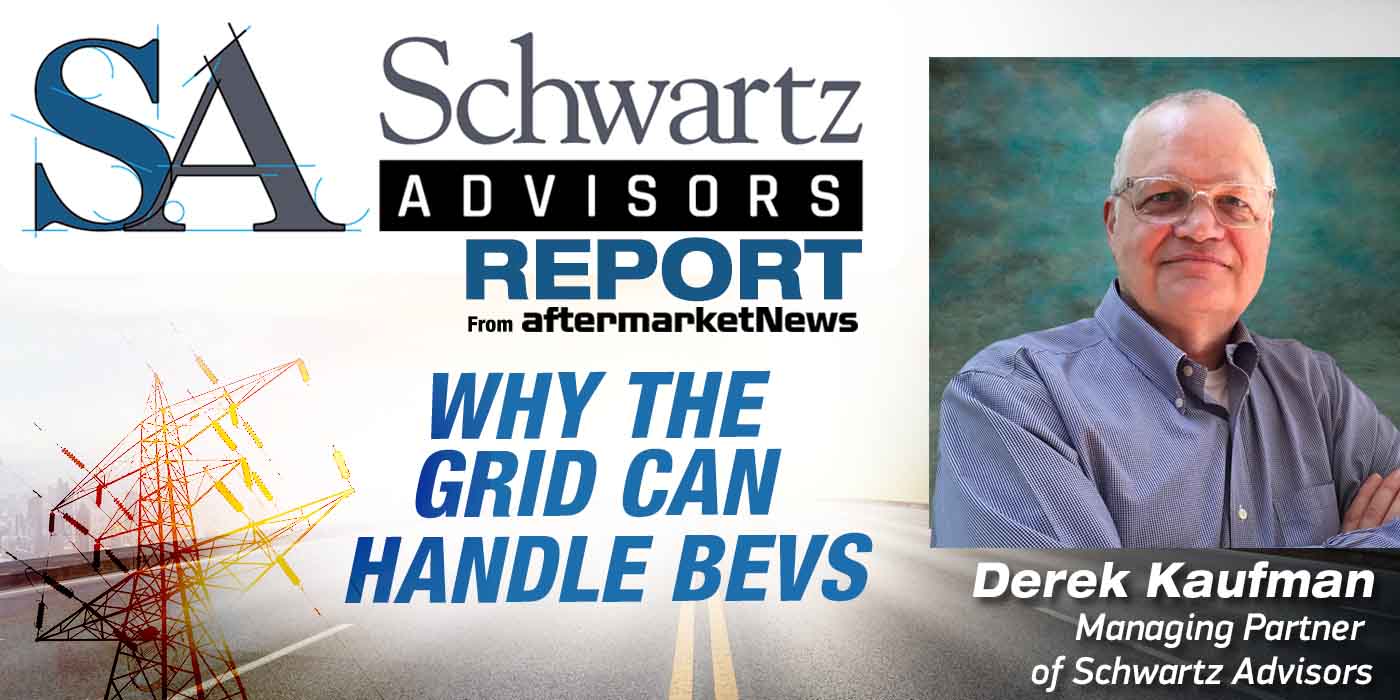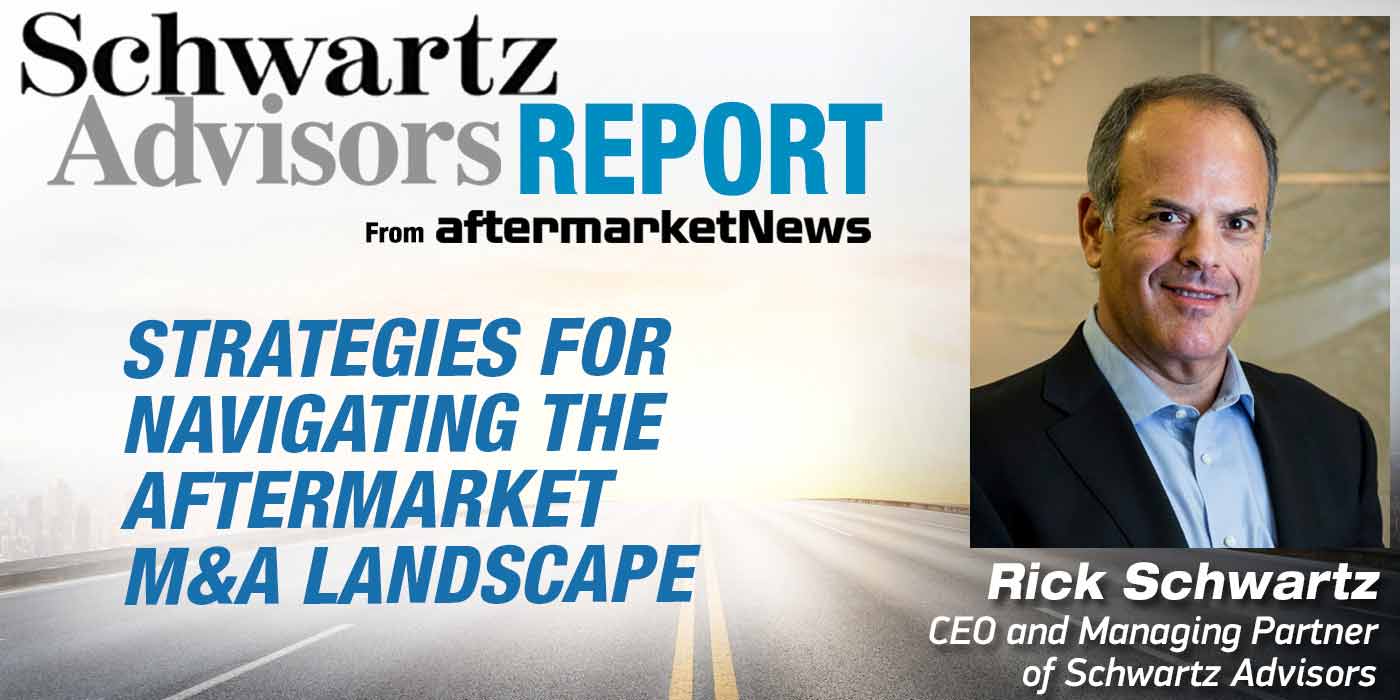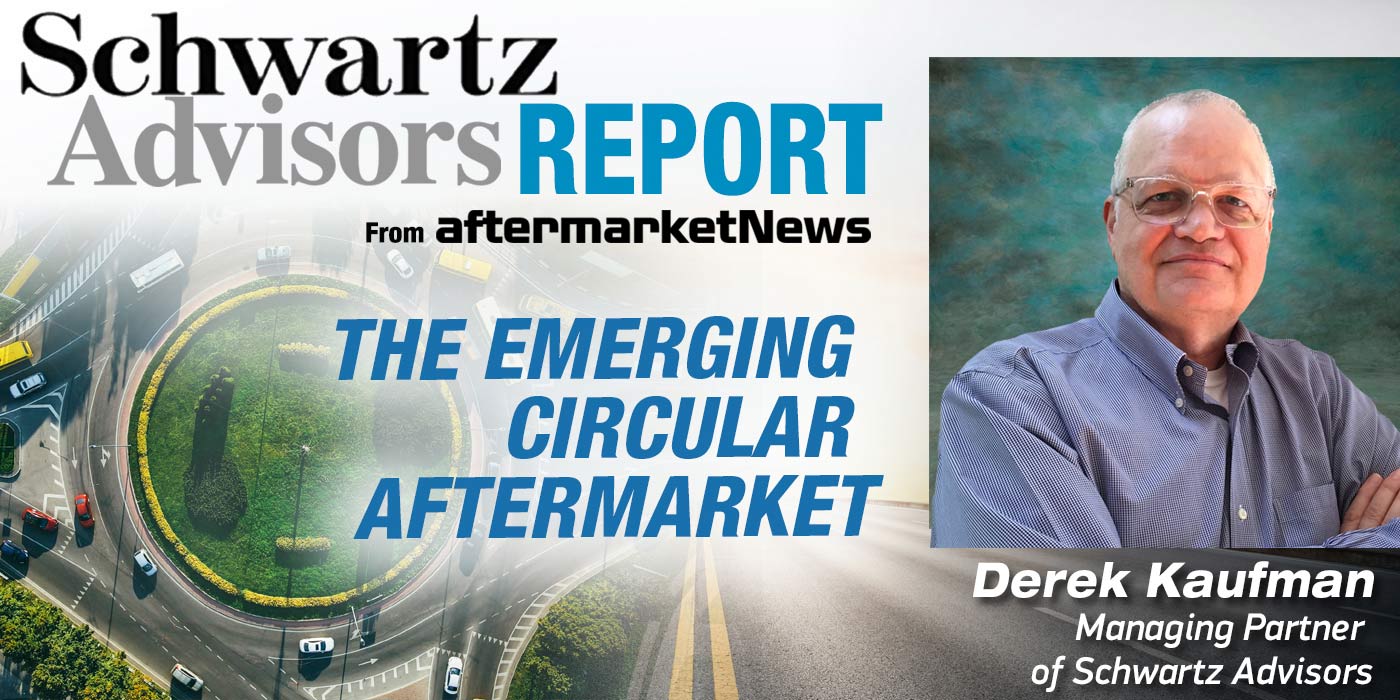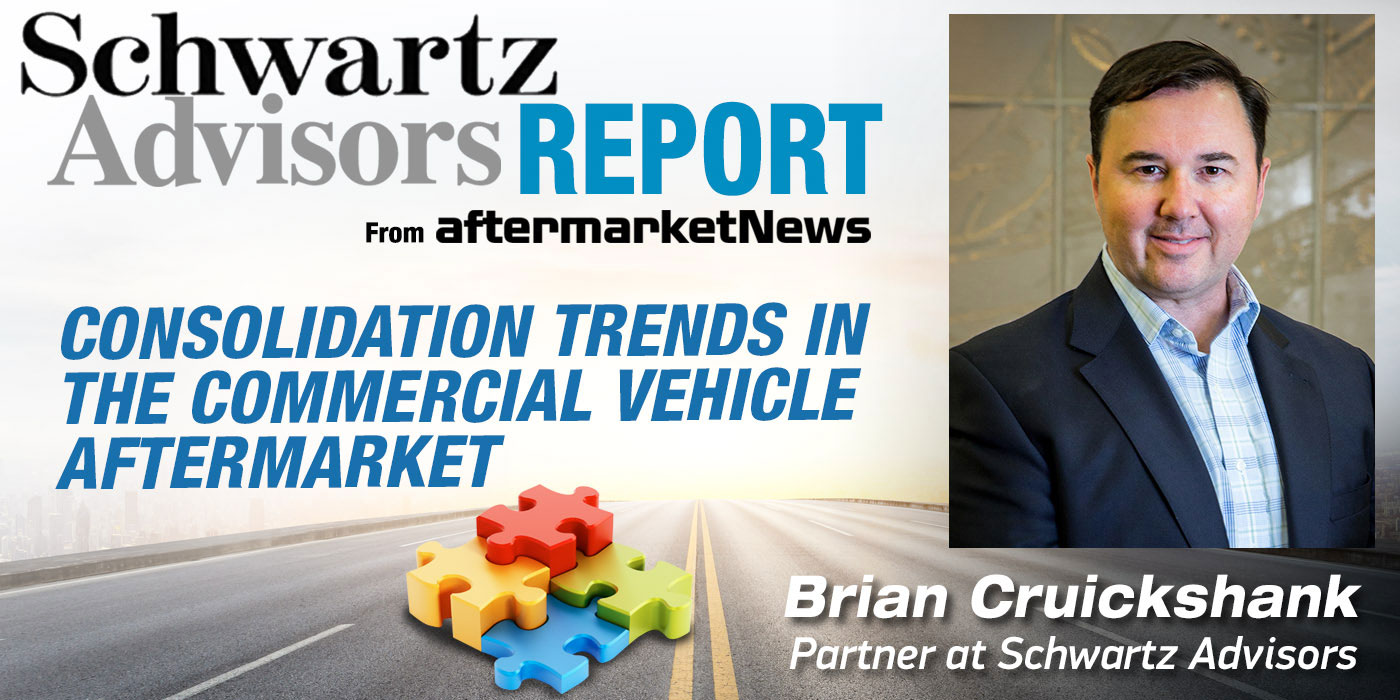 Following up on his Jan. 30 editorial on Augmented and Virtual Reality, Schwartz Advisors Managing Partner Derek Kaufman outlines in the guest commentary a few very plausible scenarios for implementing AV in the automotive world here and now.
Following up on his Jan. 30 editorial on Augmented and Virtual Reality, Schwartz Advisors Managing Partner Derek Kaufman outlines in the guest commentary a few very plausible scenarios for implementing AV in the automotive world here and now.
You can’t read an automotive publication these days without seeing some headline touting the future of autonomous vehicles (AVs). Many of the articles come with dire warnings that driverless travel, from an auto aftermarket point of view, is a crisis in the making. Of course, there are always the “glass half full” people who quickly note that the Chinese symbol for “crisis” is comprised of the dual symbols for “danger and opportunity,” so you should always be looking for the good things that can come out of a seemingly bad situation. (We will pause here to ask you to please stop using that Chinese crisis reference – the symbol does not mean both danger and opportunity – we hate to crush your convenient business metaphor but we’d rather you be accurate than misinformed.) That inaccuracy aside, we agree that there are definitely pros and cons to autonomous vehicles for the auto aftermarket so we have thought about some AV challenges and opportunities in a game we call AV Scenarios.
Some Points of Reference
Vehicles in Operation (VIO), Vehicle Miles Traveled (VMT) and the number of new cars sold each year are three key indicators of the auto aftermarket’s growth and sales potential. For the purposes of this article, we will use estimates of 265 million vehicles in operation, about 2.8 trillion miles traveled annually and a range of 16 to 18 million new cars sold each year.
AV Scenarios
Scenario 1 – AVs Reduce New Car Sales
Today’s reference point – today we have 265 million vehicles on the road and roughly 212 million licensed drivers in the U.S. – that’s about 1.2 vehicles for every driver.
The typical utilization of a non-commercial vehicle is very low. If you drive your car to and from work once a day for an hour of total round trip commuting, your vehicle utilization is under 5 percent. That low utilization could be improved by sending your autonomous vehicle back home after arriving at work so your spouse can then use it for a similar commute an hour later. Then the car could be sent home again for your teenagers to be transported to an ever-increasing schedule of after school practices and activities.
Challenge – ownership of three cars reduced to one. VIO goes down.
Opportunity – Vehicle makes two round trips to each business location – VMT goes up.
Challenge – Mom, Dad and teenager have a “family meeting” to talk about use of the family AV. A second AV is added because vehicle-scheduling complexity now requires a room full of math wizards to figure out the family’s demanding schedule. Vehicles in operation are still down from today’s levels, but less so than in the one-AV scenario.
Scenario 2 – AVs Promote Safety
More than 33,000 people die each year in traffic accidents in the U.S. and 90 percent of the incidents are caused by driver error.
Autonomous vehicles will not text and drive, drink and drive, fall asleep at the wheel or use excessive speed, which will greatly decrease the number of accidents on our nation’s roads.
Challenge – as the population of autonomous cars increases, collision repair facilities and their parts suppliers will see business volume decrease. An even larger challenge could be the actions by government or advocacy groups calling for the ban of all non-autonomous vehicles in the interest of safety. In December 2016, the U.S. Department of Transportation introduced a mandate calling for all vehicles to be equipped with Vehicle-to-Vehicle connectivity. If the mandate rolls out as written, a phase-in period would have all new vehicles V2V equipped by 2019. That is a foundation for the launch of an AV mandate. The National Highway Traffic Safety
Administration (NHTSA) has already indicated its interest in mandating collision avoidance in commercial vehicles. It is not a long leap to imagine NHTSA mandating AVs at some point in the more distant future. If the V2V roll-out is any indicator, we could see initial AV mandates for new vehicles as early as 2020 or 2025. These mandates might take the form of urban AV-dedicated lanes, AV municipal buses and taxicabs and low-speed commercial vehicles like delivery vans.
Opportunity 1– the average cost of a repair will go up due to the sophistication of autonomous control systems so revenues for collision shops and component suppliers could actually increase.
Opportunity 2 – It will also take a long time to trade out the existing fleet. The average age of a car on the road in the U.S. is 11.5 years, and the VIO level is growing between now and 2021. Even with a 100 percent mandate of autonomous cars (stripping you from your freedom to drive your fully restored 1967 GTO – but that’s another article) the entire VIO becoming autonomous doesn’t happen until 2045 or beyond.
Opportunity 3 – Autonomous cars come with a large bonus for the auto aftermarket – the elimination of underperformed maintenance.
Underperformed maintenance is estimated to be a $60 billion per year issue in the auto aftermarket – people tend to put off maintenance to save money.
That will not be allowed with autonomous vehicles because vehicle manufacturers, Tier 1 suppliers and companies supplying AVs-on-demand will need to protect themselves from the liability associated with improperly maintained AVs. We see AVs having sensors that send the vehicle to a tire store for a low tread depth reading, and brakes and suspension parts being changed based on wear or a mileage-related interval. If a diagnostic trouble code is generated on an AV, no one will place black tape over the dash indicator. The vehicle will simply take itself out of service until an AV-authorized service shop resolves the problem.
Scenario 3 – Urban Congestion Calls for AV Solutions
Ninety-five percent of all population growth in the world is in large cities. Look for cities to take strong measures to counter the growing vehicle congestion by implementing a combination of solutions including AV mandates, dedicated AV traffic lanes, city-entry taxes or fees, commercial vehicle entry reservations, substantially higher parking fees and even the banning of vehicular traffic within the city-center.
Challenge – VIO goes down as city dwellers stop buying cars due to the prohibitive cost of ownership.
Challenge – All AVs will travel only at posted speed limits, which will drive most of the non-AV people crazy. (sorry—no VIO or VMT reference for this one, just a fear of ours)
Opportunity – VMT goes up because a growing number of people can no longer afford to live in the city-center, so they commute longer distances to public transportation system hubs located on the city perimeter.
Opportunity 2 – VMT goes up as a whole range of people, who do not have access to a vehicle today, can call an on-demand AV tomorrow. In the future the people at the younger and older ends of the population age bell curve will generate a new source of VMT.
Do not fear these AV Scenarios. Yes, they will change how the auto aftermarket works and yes, there will be tradeoffs with some sectors seeing contraction and others expansion. But overall, we see the maintenance of AVs as a net positive scenario for the automotive aftermarket.
About Schwartz Advisors
Derek Kaufman is a Managing Partner at Schwartz Advisors. Schwartz Advisors (SA) is a team of highly experienced auto aftermarket experts working with clients in corporate growth projects and both buy-side and sell-side merger and acquisition activities. As part of its growth consulting work, SA keeps current with the emerging technologies and business models that will drive the future supply of automotive parts and service.














